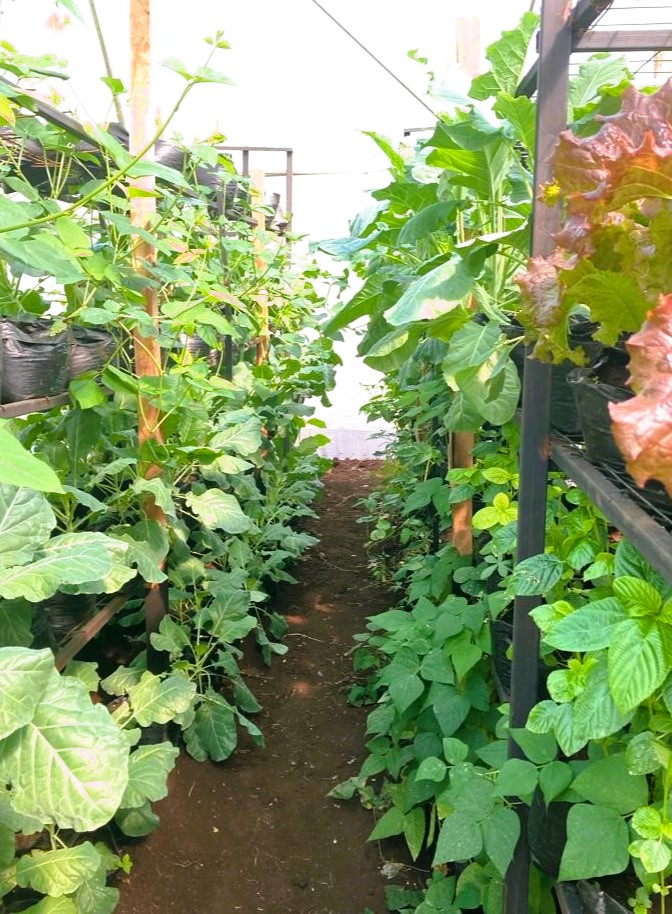
A huge harvest of vegetables, four times as much as usual, rewarded the innovative work of JAMS students and teachers this year. The harvest culminated a school-wide effort to use the new greenhouse in environmentally-sound ways. The results illustrated what the students learned: smart agricultural management increases efficiency in productivity, irrigation, and cost-effectiveness.
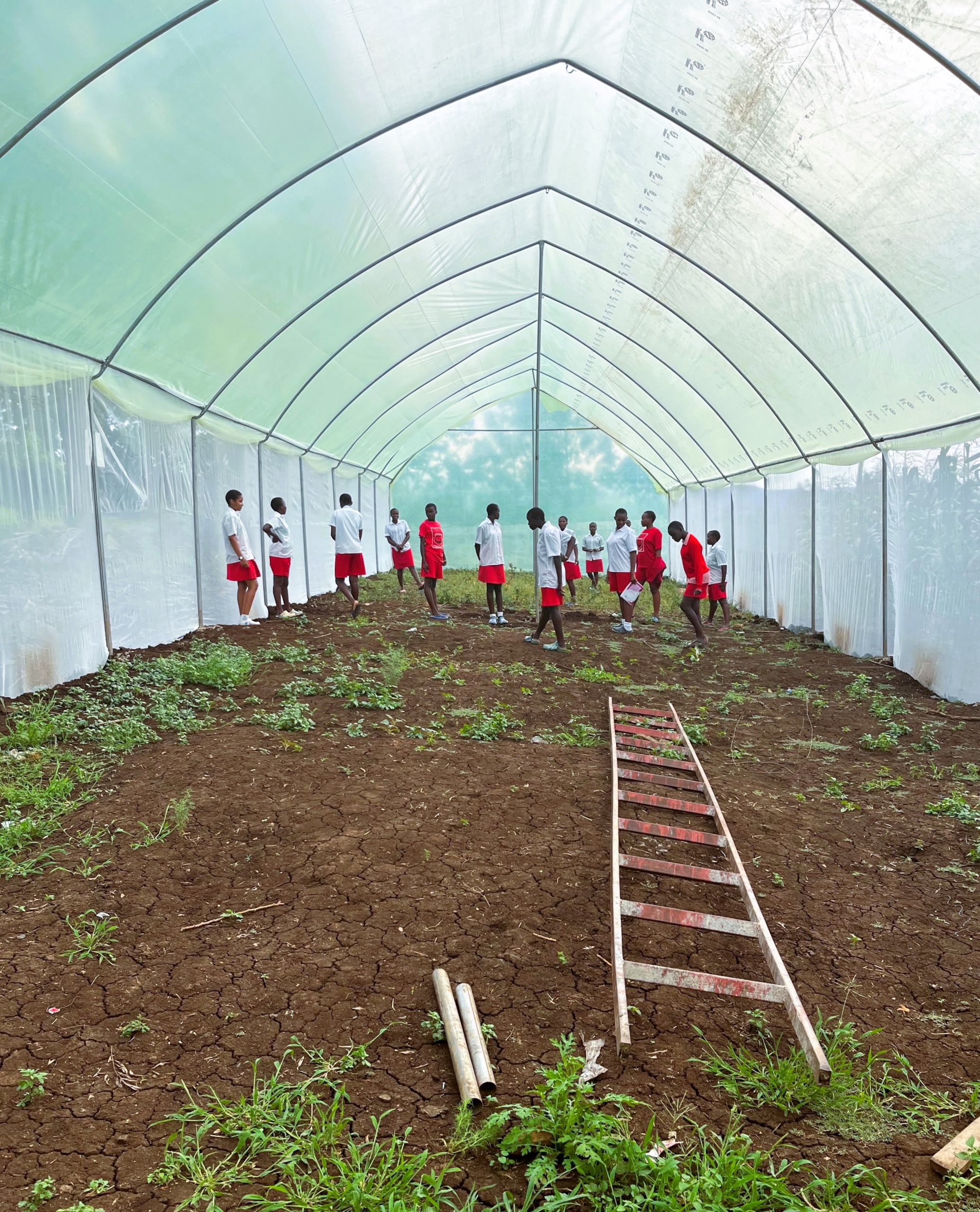
Designing the Vertical Farm
After attending a Kenya Agricultural Show last year, JAMS students determined that no one was using vertical planters, which seemed to be a way to optimize space in a greenhouse. Generous JAMS supporters had donated funding for a new greenhouse, which would be constructed in May and June 2023. JAMS students and teachers were determined to install innovative practices in the new facility.
The Form 3 (Junior) Agriculture class divided into three teams tasked with designing a vertical farming structure. Mathematical analyses of the vertical and horizontal areas of the greenhouse indicated that the shelf-like system would prove most productive and cost-efficient. In June, expert craftsmen installed shelving made of iron bars.
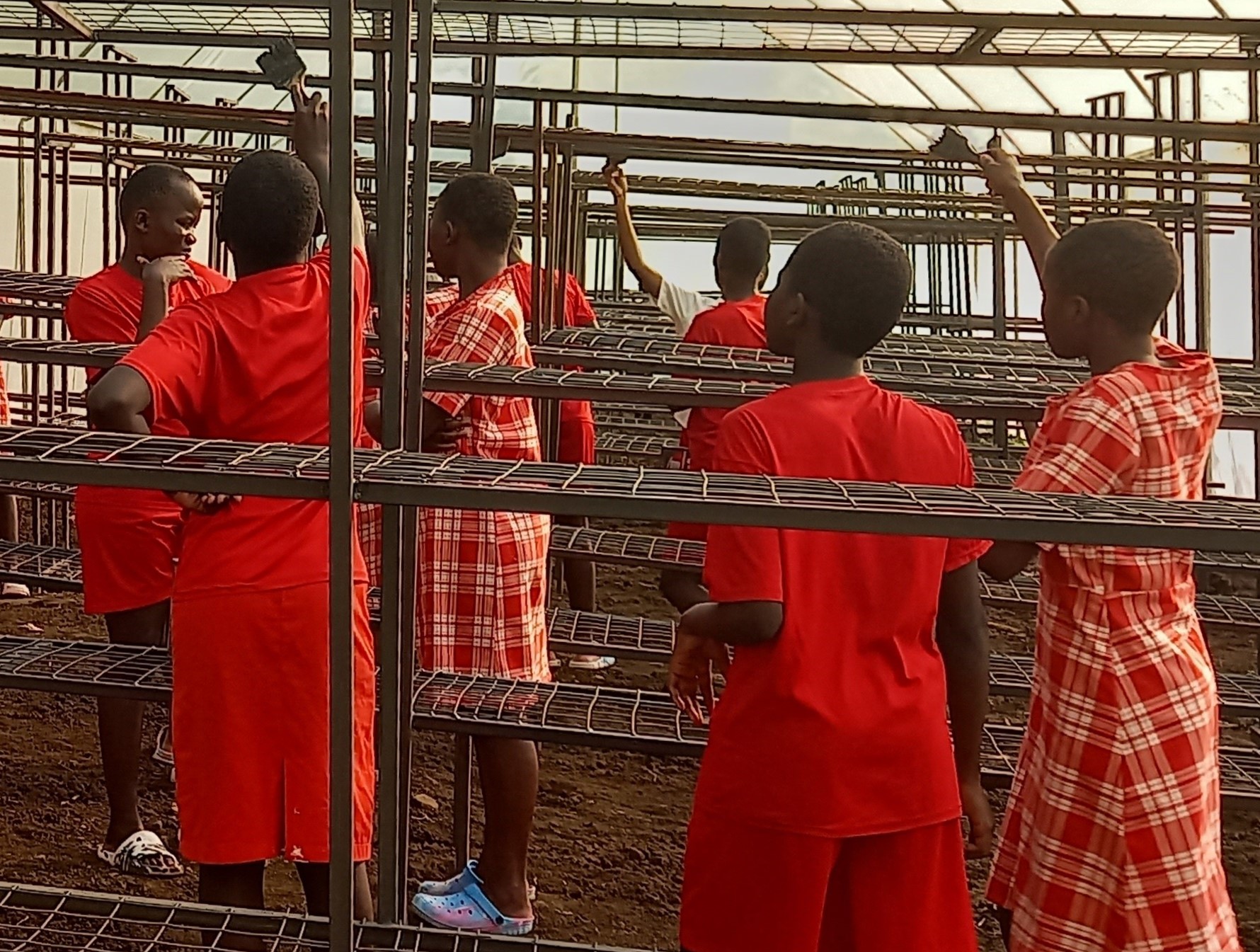
Installing the Plants
In June and July, the whole school population participated in preparing the soil and the planters. In an extremely labor-intensive process, the girls transported manure in red bins from the animals’ sheds, mixed soil with manure to provide a nutrient-rich blend, filled 3,200 polythene bags with the mixture, and then transferred the bags to the greenhouse and arranged them on the vertical shelving units.
In August, the students planted seeds for both indigenous and traditional vegetable and fruit varieties. The current crop includes kale, cowpeas, jute mallow, black nightshade, tomatoes, and lettuce.
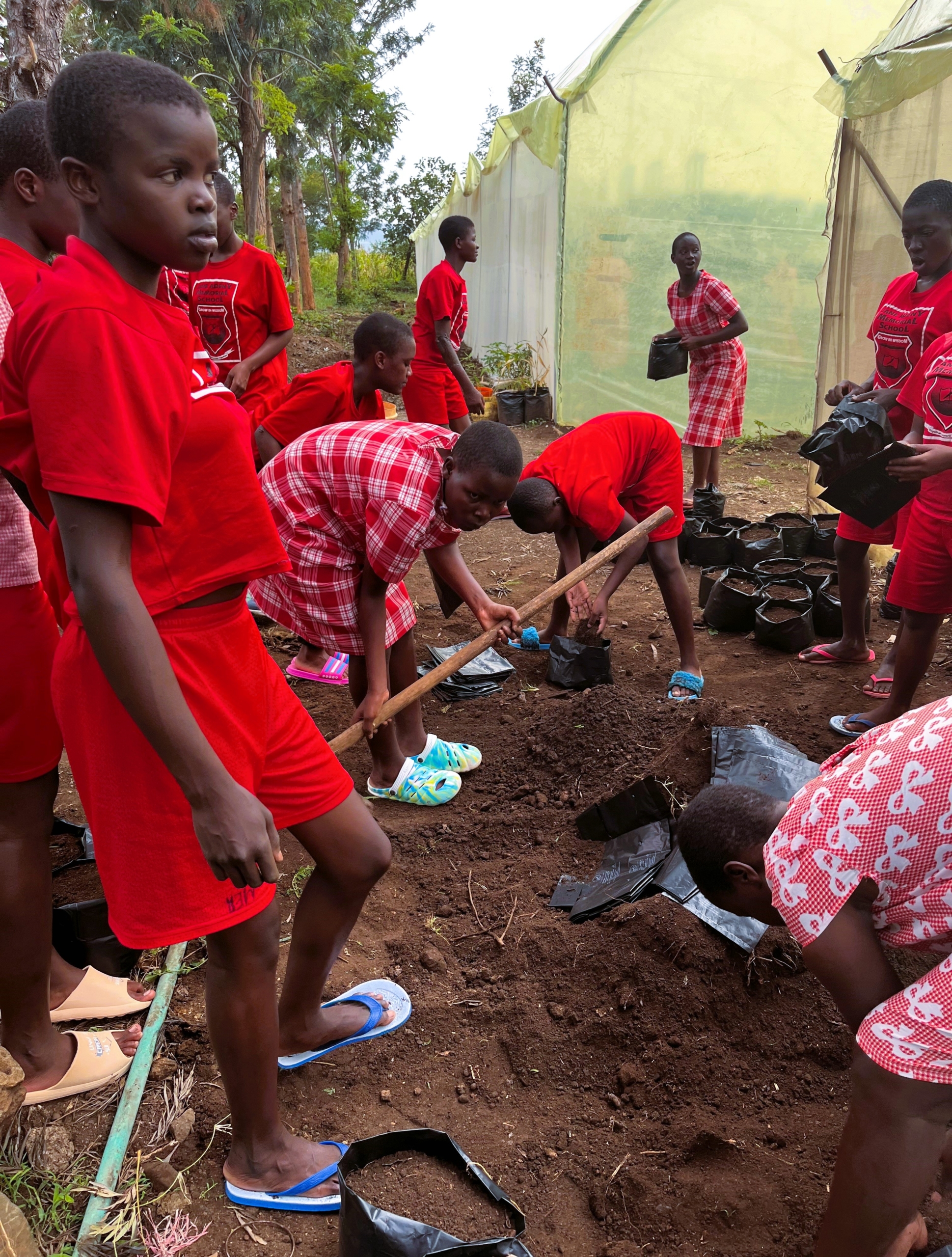
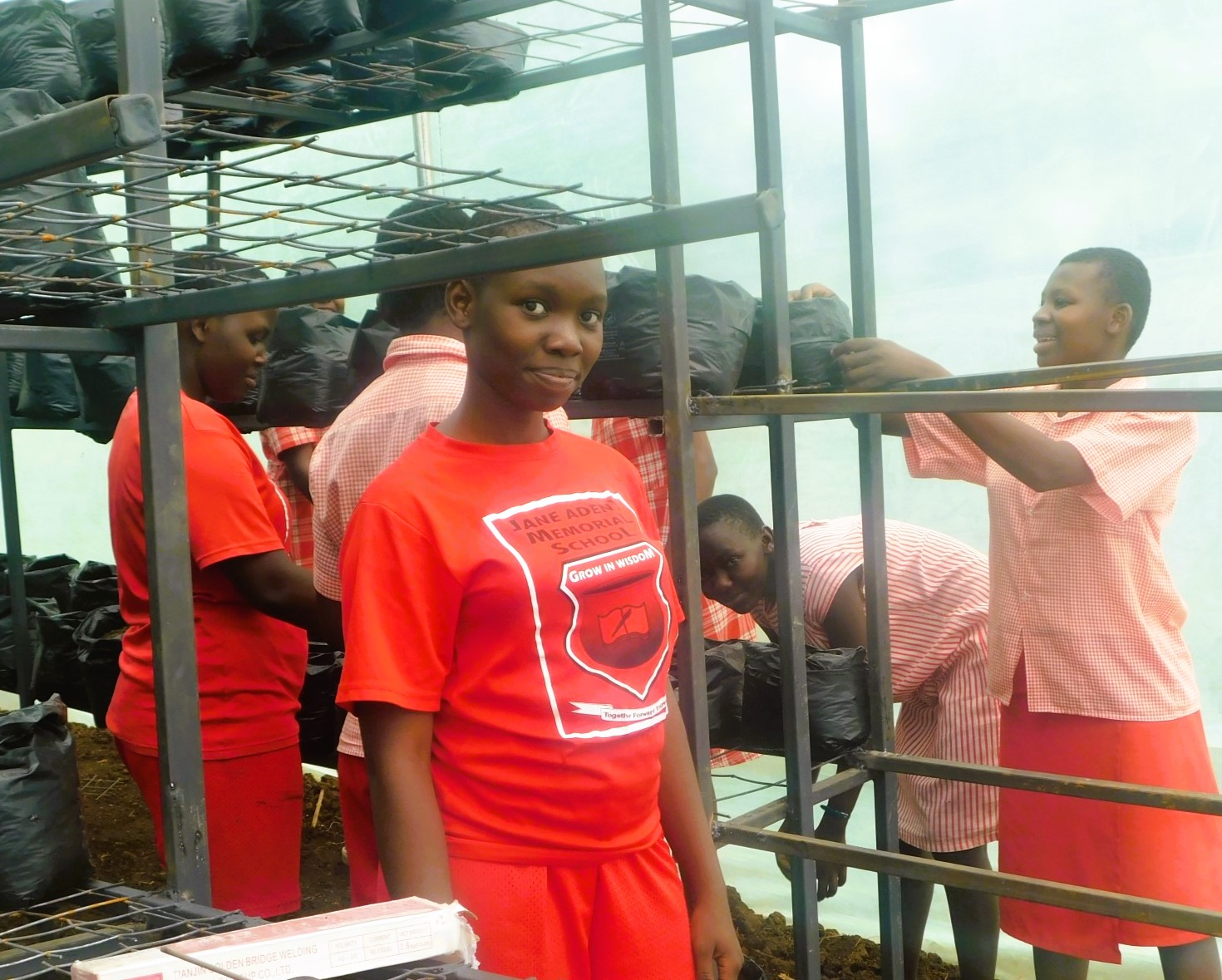
Irrigating Plants from the Rain Barrels
Two 5,000-liter tanks dedicated to this greenhouse collect rainwater from the Lynne Waldeland Resource Center building. When the rains are bountiful, the tanks fill up. Since JAMS well water is salty, it cannot be used for the greenhouse. If the tanks run dry, the school refills them from a nearby river. In this hilly location, gravity brings water from the tanks to the greenhouse irrigation system. Initially, the students had to water the vegetables manually. In December 2023, JAMS donors funded an irrigation system, which is installed and operating efficiently.

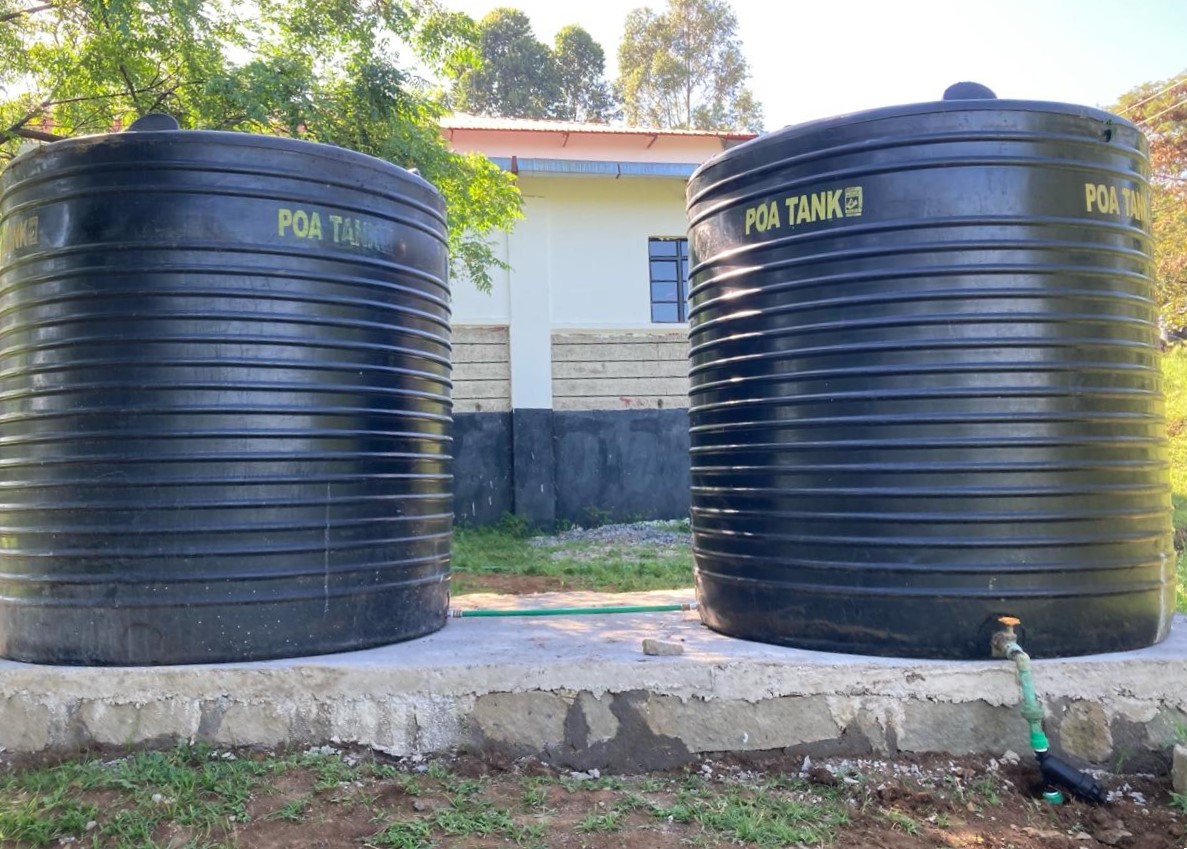
The Harvest
The new vertical system yielded at least four times as much produce as the former horizontal plantings. JAMS produces much of the food served to students and staff, which ensures high-quality, nutritious food and reduces operating expenses. When students are gone for vacations, staff members keep the greenhouses in operation and sell food in the local marketplace. Asked whether the prodigious harvest yielded leftover food to sell, founder Teresa Wasonga said, “No. The girls ate it all!”
Project Impact
“We enjoyed the construction of a new greenhouse which will be used in growing vegetables. The work was tiresome and much so demanding that we almost gave up. The amazing thing is that our teachers helped us and we really enjoyed it.” –Q., JAMS Student, August 2023




Get Social